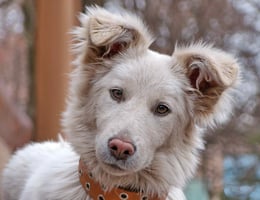Training your dog doesn't have to be a costly and time-consuming endeavor. In this article, we will...
How To Train Your Dog The Right Way: A Comprehensive Guide
Training your dog can be a daunting task. But it doesn't have to be. With the right knowledge and a bit of patience, even the most inexperienced dog owners can learn how to properly train their canine friends. This guide to good dog training provides all the information you need to know to ensure your pup is happy, healthy, and well-behaved.
Understanding Your Dog’s Needs
Before you begin training your dog, it’s important to understand their individual needs. Every dog is different, and they all have different levels of intelligence and different temperaments. Not all dogs are going to respond to the same type of training in the same way. Spend some time observing your pup and get to know their personality and behavior. This will help you create the most effective training plan for them.
It’s also important to understand that good dog training is about rewarding positive behavior. Punishment should be avoided whenever possible. Positive reinforcement is much more likely to lead to successful training. Treats, praise, and affection are all great ways to reward your pup for good behavior.
Creating A Training Plan
Once you understand your pup’s needs, it’s time to create a training plan. Start by setting small, achievable goals for your pup. For example, if you want your pup to learn to sit, start by having them sit for a few seconds at a time. As they become more comfortable with the behavior, gradually increase the amount of time they are expected to sit. It’s also important to practice different commands in different settings. This will help your pup learn to respond to commands even when they are in a new environment.
It’s also important to keep your training sessions short and sweet. Dogs have short attention spans, so it’s best to keep these sessions to 10–15 minutes at a time. This will help keep your pup focused and ensure they don’t become overwhelmed or bored.
Using Positive Reinforcement
Positive reinforcement is one of the most important components of good dog training. When your pup does something you want them to do, like sitting or staying, reward them with treats, praise, or affection. This will help reinforce the behavior and make it more likely that they will do it again in the future. It’s important to reward your pup immediately after they do something correctly so that they understand what they did to earn the reward.
It’s also important to remember that rewards don’t always have to be food. Praise and affection can be just as effective as treats. If your pup loves to play, use a game as a reward. This will help keep your pup engaged and make training more fun.
Dealing With Problem Behaviors
No matter how much you train your pup, they are still going to have occasional problem behaviors. It’s important to remember that punishment should be avoided whenever possible. Instead, focus on redirecting your pup’s behavior. For example, if your pup is barking at the neighbor’s cat, redirect their attention to a toy or a game.
If your pup is exhibiting a behavior that you don’t want them to do, it’s important to remain calm. Yelling or hitting your pup will only make the situation worse. Instead, calmly redirect their behavior and reward them with treats or praise when they do something you want them to do.
Conclusion
Good dog training is essential for a happy and healthy pup. Understanding your pup’s individual needs and creating a training plan that works for them is the key to success. It’s also important to use positive reinforcement whenever possible and avoid punishment. With patience and consistency, you can teach your pup to be well-behaved and obedient.



